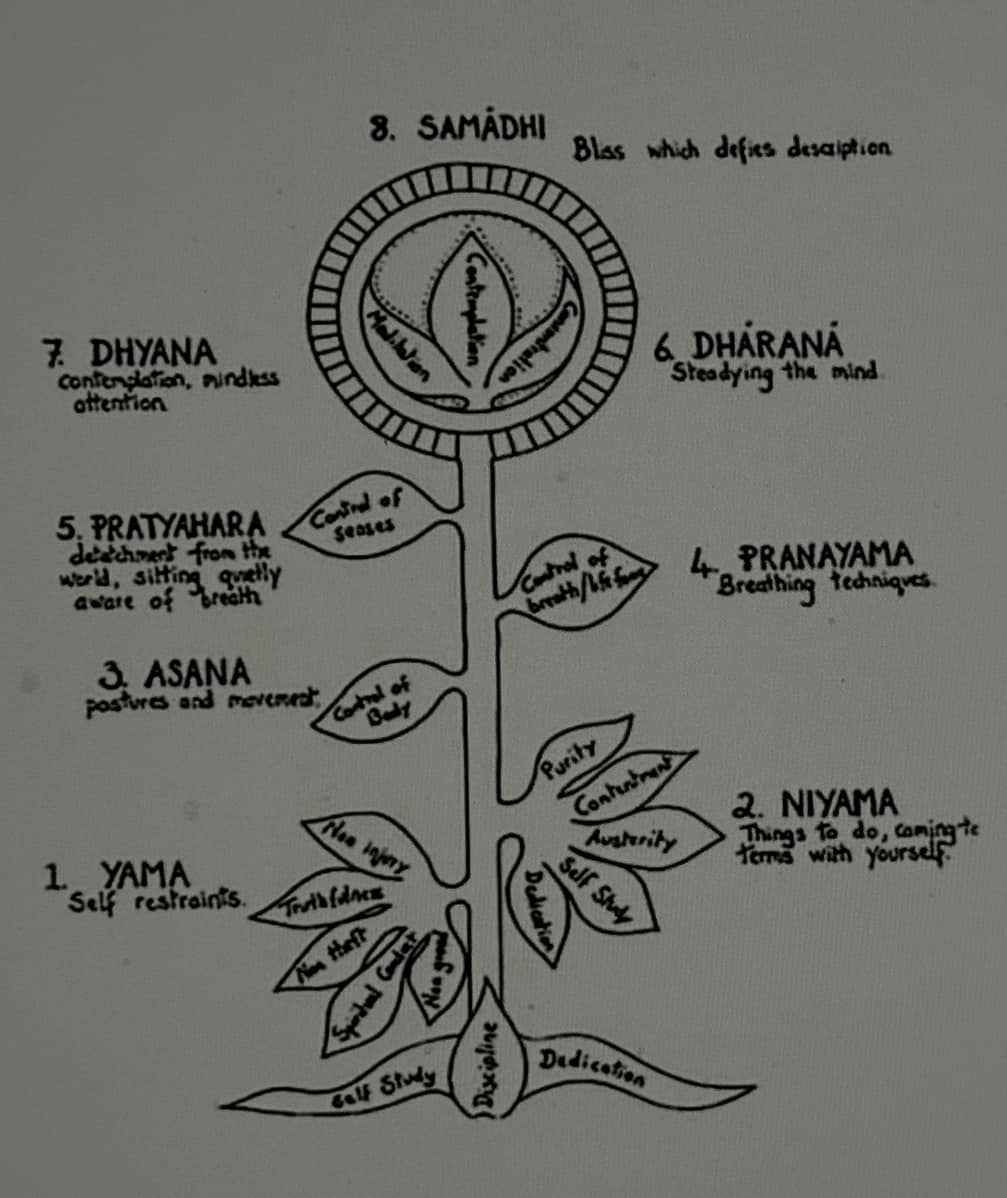Ethical Behaviours thru 8 limbs of yoga
Dear Readers, Welcome to SC Musings, Blog 40
Why are we focusing on ethical behaviours??
How do they help us personally, professionally and systemically??
Questions we will attempt to address in this Blog.
8 limbs of Yoga cropped up when I was pondering on ethical behaviours. Practising yoga for more than 4 decades- yoga for me was asanas and pranayama; even meditation was a technique I did not engage in. The 8 limbs Introduced by a friend inspired me to pursue an online course on:
Living the Science of Harmonious Union. Principles and Practice of Patanjali’s Yoga Sastra (Yati, 2009),
ably guided by Nancy Yeilding, a business coach, and a Sanyasi in spirit who runs the Narayana Gurukula in Bainbridge, Seattle.
Case studies here will help us get an idea of the connection between ethical behaviours and the 8 limbs.
Nikita, 30 plus, has been immersed in pain for years- physical pain because of ‘auto-immune’ condition, along with psychological and social pain because of the happenings in her family. Her physician refers her to NG on an ongoing basis to help alleviate her symptoms. In counselling, she continued to ‘make progress’, deepening her understanding of her physio, psycho social distress, but, her misery also deepened.
Clarkson’s description of ‘making progress’ provides a good fit for Nikita’s predicament:
“People who feel they have accomplished change but have in fact "made progress" usually place great value on maintaining a single world view and tend to find reinforcing experiences which support the future avoidance of both positively and negatively valued stresses. Even in fantasy, changing or the stimulus to change is perceived as negative, threatening, destabilizing, and therefore undesirable. Their goal is homeostasis or instability within narrow and predictable limits.
Psychotherapy may widen the limits somewhat, but the basic restrictions on autonomy and creativity are stretched or redefined, not changed.”
Brilliance in cognitive understanding did not provide relief to Nikita, as she continued to maintain her ‘victim’ position.
Anand, similar in age and social background to Nikita, has risen the ladder professionally and socially. In fact, he had faced harder challenges during his growing up years, with a mother cocooned by emotions in a shell, an autocratic father and conniving relatives. Anand sought and used counselling to uplift himself and his spirit, set goals and move on with his life; he created an environment of hope and wellness wherever he went.
Let’s now go to the wisdom teachings of Guru Nitya Chaitanya Yati (2009) to explore the path to ethical behaviours using the 8 limbs of Yoga ( ):
“There is an implied benevolence in this universe. It comes to each living being in a million forms of grace. By cultivating consciousness of such grace, you can enter into a reciprocal dialogue with the unknown from which the known is being presented from moment to moment. This dialogue is a path to growth, to understanding , and to the meaning of your ultimate fulfilment.”
There is also a challenging and obstructing counter force on which you stumble almost every day. This comes in the form of confusion, doubt, lethargy, frustration, a sense of being deceived or rejected, blocks, self-pity, or the need to wait in anxiety and impatience. A gentle, constant, and faithful dialogue with grace has the miraculous power to wear away or dispel the dark forebodings of negativity.
..To be happy is the birthright of all beings. The world is so structured that happiness comes from your own core” (p.331-332).
Both Clarkson and Guru Nitya, though from different worlds, speak of a wider perspective, and intent to change and grow.
Going back to Nikita and Anand, it is clear that, while the former was ‘making progress’, the latter was in the path of growth. I have heard in casual conversations, people mentioning growth oriented individuals as lucky and others as unfortunate, or attributing to genetic factors. This approach and attitude I am sure, is to maintain homeostasis- the internal resistance to encounter challenging and obstructing forces’.
The 8 limbs of yoga are intended to connect the various components of:
Self-Others & Environment,
which culminate in ethical behaviours.
Figure 40 is a pictorial representation of the 8 limbs, which we will explore in Blog 41.

Ethical behaviours, I discovered are founded on the 8 limbs, leading to ‘harmonious living’. They contribute to the union within self, with others and the environment, and help us face complex situations and even conflicts.
This state has been effectively captured by Nataraja Guru (Yati, 2009.p.vii)
“When mind, the bumble bee, sips the honey-like sweetness of one’s own bliss, fluttering ceases and is drawn into union”
Dear Readers,
I invite you to go through Figure 40, at least 10 times and we will continue our dialogue on ethical behaviours and the 8 limbs in our next Blog.

References:
Clarkson, P. (1988). Script Cure – A Diagnostic Pentagon of Types of Therapeutic
Change. Transactional Analysis Journal, 18(3), 211-219,b
https://doi.org/10.1177/036215378801800308
Yati, G.N.C. (2009). Living the Science of Harmonious Union. Principles and Practice of Patanjali’s Yoga Sastra. D.K. Printworld (P) Ltd. New Delhi